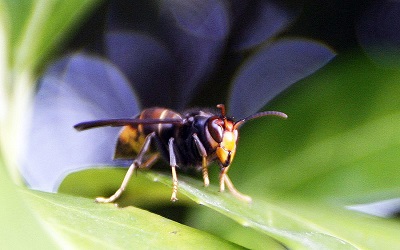随着PTE考生对PTE口语和PTE听力的重视,大家口语和听力的分数得到极大提高,但是PTE阅读渐渐成为考生们新的难题。墨尔本悉尼文波PTE特别为PTE考生们挑选了适合练习PTE阅读的文章,主题,内容,长度都与PTE阅读题中的文章相似。激活学过的词汇,更新新的词汇,提高阅读速度,全面提升自己的阅读能力。
Asian hornets prey on pollinating insects such as honey bees and could do serious damage to colonies in the UK, which have not evolved to cope with the threat. An invasive hornet that kills honey bees has been spotted in Britain for the first time, experts have confirmed. The Asian hornet was found near Tetbury, Gloucestershire. Work is under way to find and destroy its nests. The Department for Environment, Food and Rural Affairs (Defra) has set up a three-mile (5km) surveillance zone. Defra said it had been anticipating the hornets’ arrival “for some years” and had a “well-established protocol in place to eradicate them”. The Asian hornet (Vespa velutina), which is up to 2.5cm (1in) long, is now common across Europe after being accidentally introduced to France in 2004 in a shipment of pottery from China. In the summer, the non-native species was discovered in the Channel Islands of Jersey and Alderney for the first time. It is thought the hornets will not be able to survive in the north of the UK due to the colder winters. Nicola Spence, from Defra, said: “It is important to remember they pose no greater risk to human health than a bee, though we recognise the damage they can cause to honey bee colonies. “That’s why we are taking swift and robust action to identify and destroy any nests.” A Defra spokesman said, the hornet found in the Tetbury area had been killed and was undergoing DNA testing to establish how it arrived in the UK. Meanwhile, bee inspectors are using infrared cameras and traps in a bid to locate and destroy any nests in a three-mile area radius around the initial sighting.
hornet: n. 大黄蜂
surveillance: n. 监视
protocol: n. 礼仪;外交礼仪
eradicate: v. 摧毁,完全根除
swift: adj. 迅速的
robust: adj. 强健的
infrared: adj. 〈物〉红外线的
radius: n. 半径





